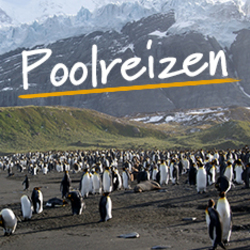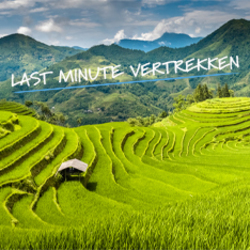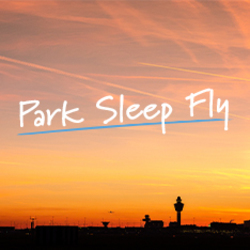Maak kans t/m 5 januari
BekijkActivities
- Wildlife Holidays
- Marine Wildlife
- Birdwatching
- New Wildlife Holidays
- — A full week of expedition cruising in the Galapagos archipelago, with two landing sites visited every day, focusing on the north and south. — Guided nature walks, snorkelling excursions, Zodiac rides and use of kayaks to discover the best of each landing site — Sail on the MV Evolution, featuring the most public space and largest cabins of any yacht in its class — Visit the highlands of Santa Cruz to see giant tortoises in their natural habitat — Enjoy the best guest-to-guide ratio (10:1) in the archipelago, with all guides Level III certified — Learn about conservation efforts affecting the Galapagos National Park at the Charles Darwin Research Station
- Family
Food
Activities
-
1
Arrive Quito
Today is an arrival day into Quito. On arrival, you'll be met at the airport and transferred to your hotel. Arrival transfers are included for everyone, regardless of which flight you arrive on today. Premium accommodation: Swisshotel Quito
-
2
Fly Quito to San Cristobal; Visit Cerro Brujo & Kicker Rock
Fly 600mi (965km) across the Pacific Ocean to San Cristobal Airport on the Galapagos Islands. After passing through the Galapagos National Park Inspection, you will meet your guide who will accompany your onward journey by bus and Zodiac to board the Evolution yacht. The crew will be waiting to welcome you on board, and help you get settled into your cabin and familiarise you with the boat. There will be a safety briefing and chance to get to know your fellow travellers and guides, before we navigate past Kicker Rock (or Leon Dormido – Sleeping Lion). Our landing is at Cerro Brujo, on the powdery white beach where we have our first walk and an opportunity to snorkel with sea lions. As the sun sets on your first day, we get together on deck to toast the voyage with a welcome cocktail. Premium accommodation: The Evolution
-
3
South Plaza Island
At only 426ft (130m) wide, South Plaza is one of the smallest islands in the archipelago, yet also one of the richest with lush and diverse flora. On this morning's landing, we'll likely encounter yellow land iguanas on a walk to a grove of prickly-pear cactus. Our trail takes us up towards cliffs that look out across the turquoise waters. This is a wonderfully colourful island, with a ground cover of red sesuvium, luminescent cacti and bright flashes of Sally Lightfoot crabs against the black lava rocks. In the afternoon, we visit Mosquera Island which has a long, narrow stretch of white sand, rocks and tide pools. Non-hikers can enjoy a Zodiac ride, watching for swallow-tailed gulls, red-billed tropicbirds and blue-footed boobies. Others can stroll or snorkel. Premium accommodation: The Evolution
-
4
Sombrero Chino Island and Santiago Island
The tiny uplifted island of Sombrero Chino – or Chinese Hat – features a primeval landscape of volcanic rubble and lava tubes. Due to its inaccessibility to larger ships, it is one of the least visited islands. There are a few adjacent craters and old, fragile pahoehoe lava flows to be discovered on this morning's nature trail. Vegetation is just starting to take hold, including colourful carpetweed plants. Activities this morning include a walk, Zodiac ride and swim. This afternoon, search the tide pools of Puerto Egas (James Bay) for sea life. During low tide, we may see marine iguanas feeding on algae. Our naturalists will point out the birdlife, including great blue herons, lava herons, oystercatchers and yellow-crowned night herons. There is a great spot here to observe fur sea lions as they laze on rocks by the grottos. Snorkelling can be accessed from the shore rather than by dinghy, with opportunities at the right time of year for golden rays and spotted eagle rays to glide by. Premium accommodation: The Evolution
-
5
Genovesa Island
Genovesa is often referred to as Bird Island for the vast numbers of pelagic seabirds that nest here. And while Genovesa harbours one of the largest and most diverse bird populations in the Galapagos, there are no land reptiles — with the exception of some very small marine iguanas. This is due to the direction of the ocean currents, which couldn’t carry the terrestrial animals here. Climb Prince Philip’s Steps to an area with colonies of red-footed boobies. Watch for short-eared owls, which feed on the petrals that fly about. Explore Darwin Bay, home to the rare lava gull. While anchored at Genovesa, enjoy an opportunity to swim, kayak and snorkel in the calm caldera of this partially eroded volcano. In the deep water, hammerhead sharks or large manta rays may pass by below. There are other more sheltered snorkelling spots to choose from too. Premium accommodation: The Evolution
-
6
North Seymour Island and Santa Fe Island
North Seymour is teeming with life. Here we'll observe the nesting site for a large population of magnificent frigatebirds and the only place where we can always find males showing their red pouches to attract females. We are also sure to see blue-footed boobies perform their comical courtship dance in the open areas. Our snorkelling site gives many opportunities to see rays: marble rays, golden eagle rays, spotted eagle rays, stingrays and even manta rays have been spotted here. Large schools of fish will likely pass by, or maybe a white-tipped reef sharks. In the afternoon, we'll arrive at Santa Fe, with its sheltered cove and large sea lion colony where bulls contend for the right to be 'beach master'. Kayaking and snorkelling can be done from the beach. Premium accommodation: The Evolution
-
7
Floreana Island
The colourful history of Florena includes pirates, whalers and convicts. This morning we'll hike to Post Office Bay, used by navigators to send mail with homebound messengers. The tradition continues to this day and you can join in and try it for yourself. Swim and kayak in the bay before a walk along the olivine beaches of Punta Cormorant. After hiking to a flamingo lagoon, spot fish and sea turtles during a relaxing stroll along the beach. Enjoy superb snorkelling at Devil’s Crown, where sea water has filled the sunken cone of an extinct volcano. Premium accommodation: The Evolution
-
8
Santa Cruz Island
This morning we'll visit Puerto Ayora on Santa Cruz Island, a small port town with restaurants, hotels, souvenir shops and other faciltiies. This area is also the home of the Charles Darwin Research Station. After breakfast on the Evolution, we'll visit the giant tortoise breeding programme to learn about the vital work being done. Since 1970, more than 2,000 tortoises have been hatched, raised and released from the Fausto Llerena Tortoise Breeding Center at the Charles Darwin Research Station, which was founded in 1959 and was once the home of Lonesome George. Today we'll also visit the Wild Tortoise Reserve in the forested highlands of Santa Cruz to see and photograph giant tortoises in a natural setting. Later enjoy some free time in Puerto Ayora before returning to the Evolution. Premium accommodation: The Evolution
-
9
Black Turtle Cove and fly to Quito
On the northern shore of Santa Cruz, Black Turtle Cove has a rich habitat of mangroves. Enjoy a Zodiac ride in this area, drifting silently through the mangroves. After this early morning excursion, we'll disembark the Evolution and head to Baltra Airport. From Baltra, fly to Quito, where it's possible to connect with international flights later this evening. If organising your own flights, we would recommend speaking to your sales representative about post-tour accommodation in Quito so you can fly home the following day and avoid any tight connections.































